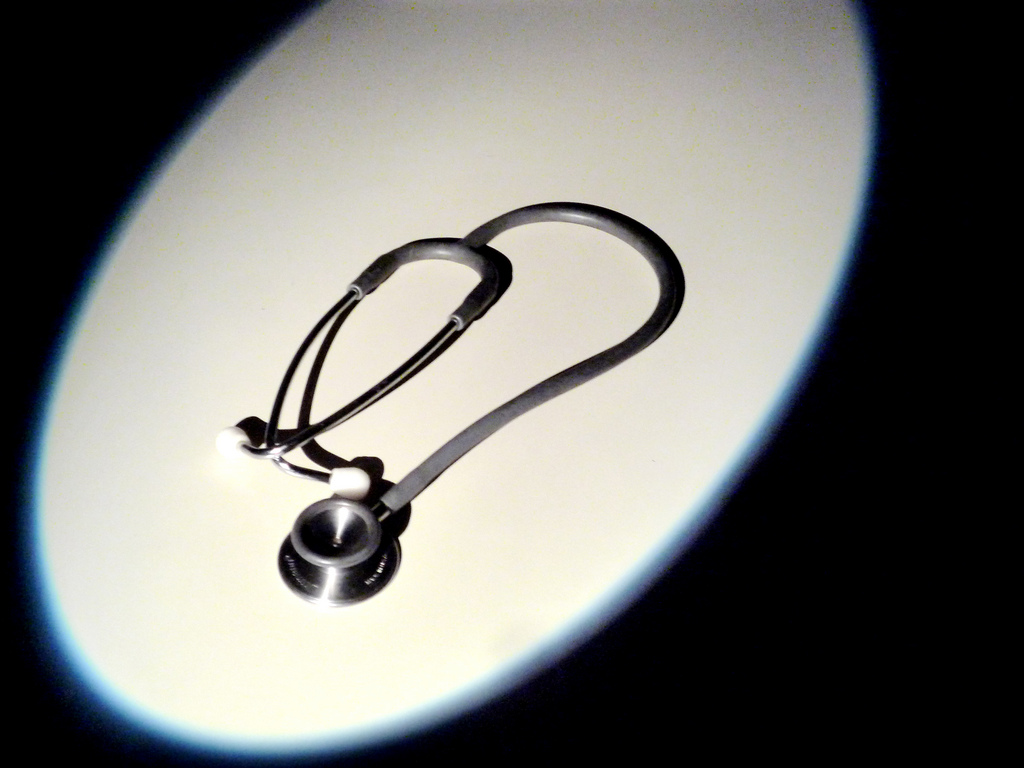Earlier in February of this year, before COVID-19’s onslaught in London, UK, I was covering service on a respiratory ward when a young medical student made herself known to the physician’s office.
“Could I borrow your stethoscope? I’m here to practice my respiratory examinations.”
I halted. I asked her where her own stethoscope was.
“Oh, I didn’t bring mine. I forgot.”
I paused again. I was tempted to make a scathing comment. Forgetting one’s stethoscope — a key part of the medic’s diagnostic armory — would have as little as a decade ago have been unthinkable. And yet here, on a respiratory ward, where listening to chests is a focal feature of every round, I was met with a student doctor who did not think to bring one.
I decided momentarily against being facetious and handed her mine. I regretted this almost instantly when I saw her reaction of genuine incredulity as I told her not to come to a respiratory ward again without it. I was baffled by her response as much as she appeared to be by mine. I have since thought to myself, “Why was that?” Was I the one being unreasonable? Am I simply expecting too much from a generation of doctors not being trained to use a basic piece of kit?
Much has been made in recent years of the phasing-out of clinical examinations in medical practice. This coincides with the advent of ever-more precise and automated imaging, artificial intelligence and machine learning — resources that will only serve to advance medical diagnostics further. These innovations, coupled with leaps and bounds across the fields of personalized medicine and genomic screening, move medicine towards ever more tailored treatments. Such applications allow even the least trained eye to see in great detail what pathology lurks beneath the skin surface. Meanwhile, we as medics blindly peter around with our hollow tubes, brandishing a school-taught ability to discern between crackles, wheezes, tinkling, and absence of sound from various body parts in the hope of narrowing down a diagnosis.
But it is not just the stethoscope which appears to have had its day. Other aspects of the physical exam, such as maneuvers to divulge key diagnostic clues, are increasingly being outsourced to more sophisticated tools. Why listen to a heart when an EKG will provide more detailed information? Better still, the EKG may identify a potentially life-threatening pathology that you would not have suspected if the patient otherwise looked clinically well. And indeed, why percuss the lungs to evaluate for an effusion when an x-ray will show it for you? Why palpate an abdomen for fluid when a bedside ultrasound can show you if it is there and exactly where that fluid is? Why presume your patient has a gallbladder infection or appendicitis until a CT scan can confirm it?
Does this approach of relying on contactless diagnostics make us lazy clinicians or practical opportunists? There is a lurking legal underpinning to all of this in turn. Are we using these tests defensively to confirm what we already know, or in place of making any assumption at all so as not to commit to the wrong conclusion? Is it negligent then to not use these resources if they are available?
This debate has received particular attention in the wake of the growing COVID-19 pandemic. When the public message from senior health bodies is to stay away from one another to avoid viral transmission, it appears that a more “hands-off” approach is best, including by clinicians. Infection control operatives across clinical sites have long told us to trim our nails, be bare below the elbows, tie long hair back and wash our hands at multiple stages before we have even touched a patient. An infectious outbreak simply serves to reiterate what we already know and should be practicing.
But this approach doesn’t always lead to better outcomes. Studies have shown repeatedly that patients isolated for suspected infections receive poorer quality care. Quite simply, it is too much effort and too time-consuming for healthcare staff to go through the rigmarole of “scrubbing up,” sterilizing and cleaning equipment before and after use on that particular individual. The result is that they are reviewed less frequently, have fewer investigations carried out following diagnosis (including routine observations, blood tests and imaging), and have prolonged hospital stays compared to those on open wards.
The clinical examination was rightly established for a reason, before detailed imaging techniques were even dreamt of, and iteratively allowed for physicians to stratify the severity of their patients’ complaints. Time, usually, is of the essence, and can mean the difference between a delay in antibiotics or even surgery if assumptions are made on the basis of a history alone. Rightly so, the clinical examination is still taught in medical schools the world over. Likewise, its importance takes on paramount significance in regions of poorer resources. In the absence of expensive technology to do it for you, diagnosis by examination alone is the standard, and stakes are higher.
Indisputably, technology has allowed for unprecedented advances in the medical field in the past half-century alone, and I certainly welcome it. My concern is for how long this will remain the case until our medical profession becomes devoid of physical exam skills entirely by using technology as a substitute. Indeed, technology should certainly be used as an aid, but not a complete replacement of a clinician’s touch, experience and perspective.
Image credit: Stethoscope by Rosmarie Voegti licensed under CC BY 2.0.


